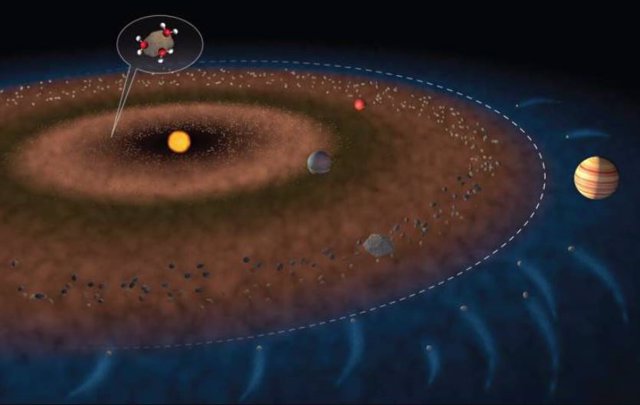March 15 () –
A new study offers new data on how and when they arrived on Earth such massive amounts of water that cover 71% of the earth’s surface and rules out that it came from melted meteorites.
Led by University of Maryland Associate Professor of Geology Megan Newcombe, the researchers analyzed molten meteorites that had been floating in space since the formation of the solar system 4.5 billion years ago. They found that these meteorites had extremely low water content; in fact, they were among the driest extraterrestrial materials ever measured.
This results –presented in Nature–, that allow researchers to rule them out as the primary source of Earth’s water, could have important implications for the search for water – and life – on other planets. It also helps researchers understand the unlikely conditions that lined up to make Earth a habitable planet.
“We wanted to know how our planet got water, because it’s not entirely obvious,” Newcombe explains. Getting water and having surface oceans on a planet that is small and relatively close to the Sun is challenging.”
The team of researchers analyzed seven molten meteorites, or achondrites, that crashed to Earth billions of years after splintering from at least five planetesimals (objects that collided to form the planets in our solar system).
In a process known as meltdown, many of these planetesimals were heated by the decay of radioactive elements in the early history of the solar system, which caused its separation into layers with crust, mantle and core.
Since these meteorites fell to Earth only recently, this experiment was the first time their volatiles had been measured. UMD geology student Liam Peterson used an electron microprobe to measure their levels of magnesium, iron, calcium and silicon, later joining Newcombe in the Earth and Planets Laboratory at the Carnegie Institution for Science. to measure its water content with a secondary ion mass spectrometry instrument.
“The challenge of analyzing water in extremely dry materials is that any traces of terrestrial water present on the surface of the sample or inside the measuring instrument can be easily detected, contaminating the results,” explains Conel Alexander, co-author of the study and scientist at the Carnegie Institution for Science.
To reduce pollution, the researchers first fired the samples in a vacuum oven at a low temperature to remove water from the surface. Before the samples could be analyzed in the secondary ion mass spectrometer, they had to be dried again.
“I had to leave the samples under a turbopump – a high-quality vacuum – for over a month to remove ground water sufficiently,” Newcombe explains.
Some of the meteorite samples came from the inner solar system, where Earth is located and where conditions are assumed to have been hot and dry. Other, rarer samples came from the coldest, iciest reaches of our planetary system. Although it was generally thought that water came to Earth from the outer solar system, it has not yet been determined what kind of objects could have transported that water through the solar system.
“We knew that many objects in the outer solar system were distinct, but it was implicitly assumed that because they came from the outer solar system, they must also contain a lot of water,” said Sune Nielsen, a co-author of the study and a geologist at the Woods Hole Oceanographic Institution. Our work shows that this is not the case. As soon as the meteorites melt, there’s no water left.”
After analyzing the samples of achondrite meteorites, the researchers found that the water made up less than two-millionths of their mass. By comparison, the wettest meteorites — a group called carbonaceous chondrites — contain up to 20% water by weight, or 100,000 times more than the meteorite samples studied by Newcombe and his co-authors.
This means that the heating and melting of planetesimals causes a near-total loss of water, regardless of where they originated in the solar system and how much water they started with.
Newcombe and his co-authors found that, contrary to popular belief, not all objects in the outer solar system are rich in water. This led them to conclude that the water probably reached Earth via unmolten or chondritic meteorites.
As he points out, his findings have applications that go beyond geology. Scientists from many disciplines –and especially exoplanet researchers– are interested in the origin of Earth’s water because of its deep relationship with life.
“Water is considered to be an essential ingredient for life to thrive, so as we go deeper into the universe and discover all these exoplanets, we start to figure out which of these planetary systems might support life,” he explains. . In order to understand these other solar systems, we want to understand our own.”













![[Img #73262]](https://thelatestnews.world/wp-content/uploads/2024/07/The-era-of-artificial-intelligence-in-digital-marketing-in-Spain-300x200.jpg)